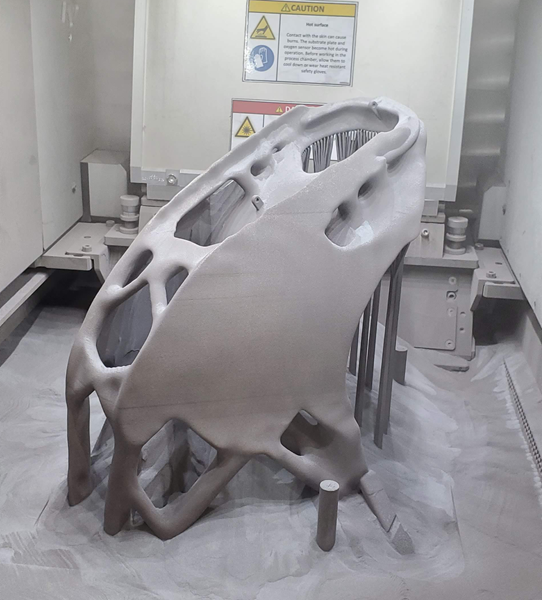Uniformity Labs, a US-based company that develops material and software solutions for users of Additive Manufacturing technologies, has recently 3D printed an automotive part with its ultra-low porosity AlSi10Mg.
The part, a roll-cage helps to stiffen the chassis, which is desirable in racing applications. It should be noted that roll cage designs usually depend on the application, hence the various specifications and regulations that result from racing organizations. However, most of these organisations harmonise their regulations with those of the FIA.
In this specific case, the roll-cage has been designed for a solar powered race. It will be used on a car participating in the Bridgestone World Solar Challenge, an international event for solar-powered cars driving 3000 kilometers through the Australian outback.
The manufacture process required the combination of an SLM 280 2.0 Dual Laser Powder Bed Fusion 3D printer and an ultra-low porosity AlSi10Mg. The latter is an aluminium alloy powder that has already proven its capabilities in the production of parts in various industries.
According to Uniformity Labs, the roll cage was printed with a 30um layer thickness to get a fantastic surface finish and helps deliver “the productivity level of a 60um layer thickness print.”
Other mechanical properties of the material reveal:
AlSi10Mg Mechanical and Density Information
- Three times the throughput @ 99.8%+ density (average 99.9%)
- Ultimate Tensile Strength (Rm z) – 406 ± 14 MPa/ 251 ± 8 MPa
- Ultimate Tensile Strength (Rm xy) – 438 ± 18 MPa/ 247 ± 9 MPa
- Yield Strength (Rm z) 264 ± 8 MPa/148 ± 5
- Yield Strength (Rm xy) 291 ± 12 MPa/156 ± 4
- Fracture Elongation (Rm z) 3.7 ± 0.7%/14.2 ± 1.1%
- Fracture Elongation (Rm xy) 7.2 ± 1.1%/17.3 ± 2.0%
- Surface roughness in z direction (no treatment) (um) 3.4 ± 0.9
A press release explains that the car engineering team used topological optimization techniques to design the part to ensure strength while reducing material usage (weight). The cost and material performance were critical factors, so they replaced carbon fiber with an additive manufactured part made from the Uniformity AlSi10Mg powder. The aluminium alloy powder proves to be a viable alternative in robust, lightweight parts that are required to accelerate the transition to cleaner, safer, more inclusive mobility systems.
“This is an excellent example of how our innovation can significantly improve part design using our advanced powders and modern AM techniques,” said Adam Hopkins, founder and CEO of Uniformity Labs. “Our ultra-low porosity AlSi10Mg and print processes allowed the car development team to create a better part quickly, cheaply, and optimized for the necessary weight and safety parameters.”
“It’s easy to see how the processes used, and benefits afforded to the roll-cage production can apply to the creation of complex parts for use in mainstream industries such as aviation, auto, and consumer electronics,” Hopkins continued. “That’s what our technology is all about.”
Remember, you can post job opportunities in the AM Industry on 3D ADEPT Media free of charge or look for a job via our job board. Make sure to follow us on our social networks and subscribe to our weekly newsletter : Facebook, Twitter, LinkedIn & Instagram ! If you want to be featured in the next issue of our digital magazine or if you hear a story that needs to be heard, make sure you send it to contact@3dadept.com






